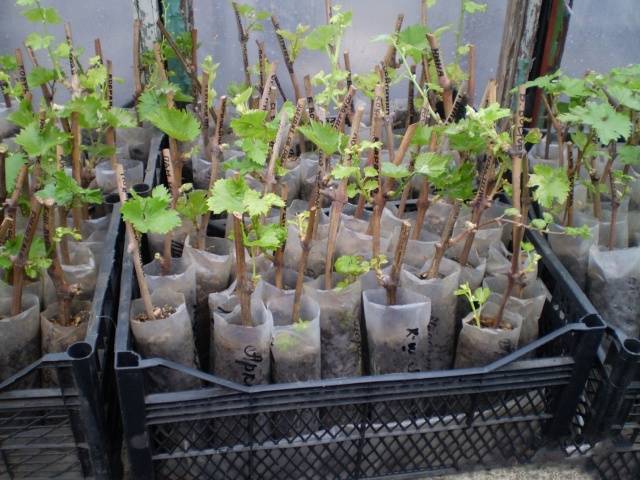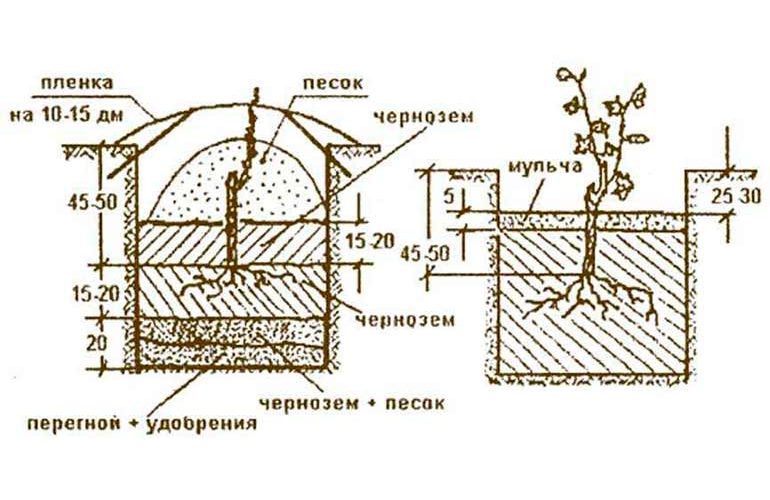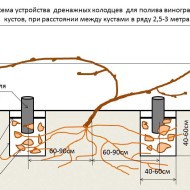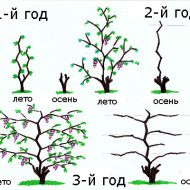Secrets of planting and growing table grape variety Baikonur
Content
History of origin
The Baikonur grape was bred relatively recently - in 2012. The author of the interspecific form was the famous amateur breeder Yevgeny Pavlovsky. The progenitors of Baikonur are the Talisman and Krasotka varieties. The fruit and berry culture bred as a result of hybridization was recognized as highly promising, since it adopted only positive qualities from the parental forms. So, the Talisman "shared" excellent taste properties, resistance to diseases, pests and adverse weather disasters. From the Krasotka grape, the hybrid has adopted its high transportability and excellent commercial characteristics.
Baikonur grapes are undemanding to the growing environment. Fruit and berry crops are massively grown in Belarus, Ukraine and throughout the Russian Federation.

Video "Acquaintance with the Baikonur grapes"
This video presents the main varietal characteristics of a fruit and berry crop.
Description of the variety
The interspecific hybrid Baikonur belongs to tall and fast-growing shrubs. According to gardeners' reviews, grapes can be used to decorate arches and gazebos on the territory of the personal plot.
Bushes and vines
Tall, solid bushes grow quickly. Strong and powerful vine is resistant to winds and other weather disasters. In one season, young shoots grow up to 4 m. Young twigs are painted in a beautiful brownish-green hue. Over time, the bark changes color to dark brown.
The leaves give a special charm to the vineyard. Large leaf plates have the correct shape. The color is uniform, rich green. With proper care, the plant retains its decorative characteristics throughout the growing season.
Commercial quality of fruits
Bunches come in medium and large sizes. The shape is conical or cylindro-conical. Since the density of the berries is low, the bunches have a loose or medium-soft structure. The average weight of one hand is 400–600 g. Under favorable weather conditions and proper care, the weight of a hand can reach 2–2.5 kg.
Baikonur grapes are characterized by an elongated and nipple-like shape. The average length of one berry is 3-4 cm, weight - 12-16 g. The color of the peel combines purple and cherry shades.

Taste qualities of fruits
Juicy, fleshy and aromatic pulp is hidden under the dense skin. The taste is harmonious, sweet and sour. The level of sugar accumulation reaches 19–20%, while the acidity does not exceed 7%.
The peculiarity of the Baikonur variety is the ability to maintain marketable and taste qualities for a long time.The harvested crop can be transported over short distances.
Features of fruiting
The flowers of the fruit and berry culture are bisexual. No additional pollinators are required for pollination. After 105-115 days from the beginning of the growing season, the first crop is harvested. Under favorable weather conditions, harvesting falls at the end of July and the beginning of August.
Productivity and use of the variety
There are no exact data on the yield of the variety, as the young hybrid is undergoing testing. It is reliably known that with proper care from one bush, you can collect about 18-40 kg of usable berries.
Juicy and aromatic berries are consumed fresh, added to desserts, pastries, salads and various snacks. Due to its high sugar content, the Baikonur variety can be used for making juices and wine.

Advantages and disadvantages
The Baikonur grape has a number of positive and negative qualities:
- unpretentious care;
- early ripening;
- resistance to natural anomalies;
- lack of peas;
- excellent taste and pleasant aroma;
- versatility of application;
- high transportability and good bedding.
- the presence of hard-to-remove bones;
- tendency to cracking with an abundance of sunlight.
Features of planting and growing
Yield indicators, marketable and taste qualities depend on the observance of plant agrotechnology.
Choosing a place, soil and planting material
Vineyards need sunshine for abundant fruiting. The best option is a section of the garden, closed from drafts and winds, from the south or south-west side.
In terms of soil, grapes love light and nutritious soil. In this case, the groundwater level should be no higher than 2 m from the earth's surface. Heavy clayey, saline and marshy soils are not suitable.
It is equally important to choose the right planting material. The Baikonur variety can be propagated by seeds, layering, cuttings and seedlings. It is better to buy seedlings and cuttings in specialized nurseries. Thus, a seedling suitable for planting has a healthy appearance, a well-developed root system and several small branches.

Landing rules
The landing pit is prepared in advance. The bottom of the pit is laid out with broken brick, expanded clay or gravel. A drainage system is necessary to remove excess moisture. Then a nutrient mixture is introduced, consisting of river sand, peat and rotted manure.
The planting depth of the seedling depends on the natural conditions of the growing region:
- 50–55 cm - southern regions;
- 60–70 cm - central regions;
- 80 cm - northern regions.
You can plant seedlings and cuttings both in spring and autumn. Autumn planting is carried out 3-5 weeks before the coming frosts. The seedling / cutting planted in the ground is carefully dug in with earth, watered along the edge of the trunk circle and mulched.

Grape bush processing
Baikonur belongs to the moisture-loving fruit and berry crops. Water the plant often and abundantly. However, don't overdo it. Excess moisture in the soil can lead to root rot. Therefore, the plant should be watered as the top layer of the earth dries out.
2-3 weeks before harvesting, the vineyard is no longer moistened.
Nutrient feeding will help to increase fertility and productivity. In the spring - before and after flowering - foliar dressing is carried out with complex mineral mixtures. In summer, the area of the trunk circle is sprinkled with wood ash.
Pruning and securing vines are important steps in vineyard care.Since the Baikonur vine has short internodes, about 10 eyes should be left on one shoot. Pruning shrubs occurs in the fall, when all the leaves fall off.
Do not forget about the need to fix the vine. Rapidly growing shoots can fall off under the weight of the bunches. You can avoid such an unpleasant phenomenon by tying vines to vertical trellises and a wire stretched between them.
- Drainage irrigation scheme
- Trimming scheme
- Vine garter pattern
Shelter of the vineyard for the winter
In the description of the variety, it is indicated that Baikonur firmly tolerates a drop in air temperature down to -23 ° C. The grapes grown in the southern and central regions winters without shelter.
Vineyards of the northern regions are insulated for the winter. The branches are partially cut and bent to the ground. Dry opal foliage is poured over the vine and branches of pine spruce are laid.
Morbidity and preventive measures
The Baikonur variety is resistant to diseases and pests typical for grape crops. Preventive treatment of shrubs with a Bordeaux mixture (3%) or a solution of ferrous sulfate (3-5%) will help prevent infection with gray rot, powdery mildew and mildew.
Due to its amazing commercial and taste qualities, the Baikonur variety is considered one of the best. If you follow the planting and growing rules described above, you can achieve high crop yields.



